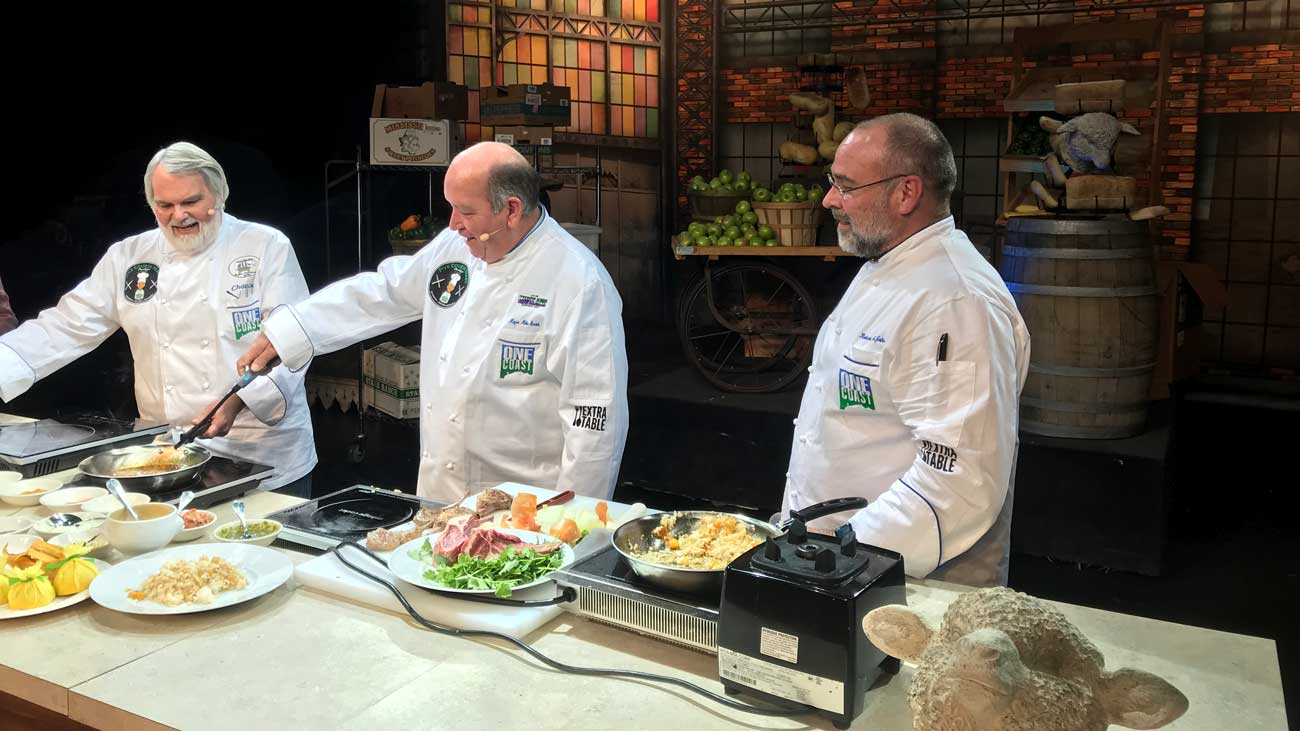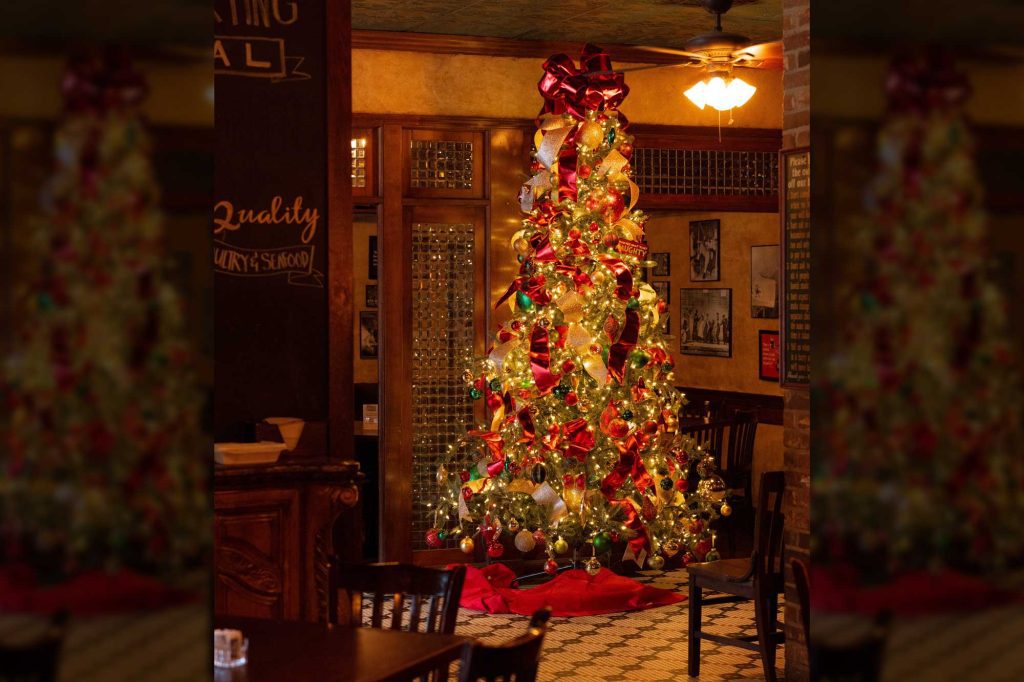Olives
When Hurricane Katrina hit the Gulf Coast, the Beau Rivage hotel and casino was inundated with water and its future changed forever. Its restaurants were completely wiped out and the entire operation was shut down for one year. In 99.9 percent of the cases, that was a bad thing. For that .1 percent there is Olives.The Beau Rivage’s parent company, MGM Mirage, had a clean slate with which to work and they obviously sunk a sizable portion of the $550 million rebuilding budget into their restaurant operations.
Before the storm, the Beau Rivage offered a mediocre Italian restaurant, an on-again, off-again fine dining restaurant whose atmosphere was dictated mostly by huge saltwater aquariums that lined the walls, a Japanese concept that never seemed to decide what it was, and, a Chinese concept— the only concept Steve Wynn sent down from his Las Vegas mothership, The Belagio— Noodles.
Noodles was my favorite Chinese restaurant in the state, and certainly the best of the original Beau Rivage concepts, but it didn’t make the cut.
Lucky for us, and in a situation that might possibly our first opportunity to say, ”This is better than it was before the storm,” The Beau Rivage has brought celebrity chef, Todd English’s Mediterranean mega restaurant, Olives, to town.
Olives is possibly the most visually appealing and tastefully decorated restaurant in the state of Mississippi. The dining room was designed by architect Jeffrey Beers and is designed to look like an ancient olive mill. It, along with the exposed kitchen, are prime examples that casinos can and will spend money to get the very best. The room is exquisite.
I have never eaten at the original Olives in Boston, but I enjoyed an excellent meal at the Aspen Olives a few years ago. The coast restaurant, at least appearance-wise, is better.On the night of my visit the restaurant had been open one month, the casino was packed, yet the restaurant was only three-quarters full. It should be noted that the waiting line to acquire a table in the all-you-can-eat buffet restaurant stretched about half the length of a football field.
The amuse bouche, a basket of freshly baked breads, two tapenades, and a small assortment of the restaurant’s namesake kicked the meal off with a bang. Both versions of the tapenade were subtly flavorful and probably the best this writer has tasted.
As I am wont to do, I ordered several courses— five from the appetizer menu— and all were first-rate. The fig and proscuitto flatbread and one of the most visually stunning presentations of carpaccio were the best of the bunch. The tuna was a hit-and-miss proposition with each bite as some were flavorful and spicy and others were bland and boring.
The pastrami seasoned ribs were an example of a dish brilliantly conceived yet average when produced. The portion was a little too large. The ribs were melt-in-your-mouth tender though, at least on this night, were the victims of a heavy hand holding the pepper shaker.
The final appetizer— a crab gnocco— was delicate, flavorful, and made perfect use of the classic crab-avocado pairing.
The service at Olives was attentive yet spotty at times with several long drags between courses, though nothing that couldn’t— or shouldn’t— be written off to a restaurant still in it’s honeymoon period.
Halfway through the meal I began to wonder if the three-quarters full dining room was a result of disinterest or of the managers short seating the dining room in a restaurant that was four weeks old hoping not to tax the kitchen. Hopefully, the latter was the case.
We ordered three pasta dishes the best of which was a ravioli that I would certainly order again. The other two weren’t executed to English’s standards but were miles ahead of anything served in the Italian restaurant that previously occupied the space.
The exposed kitchen is a chef’s dream and is one of the best examples of how to incorporate an open kitchen into a dining room that I have ever seen.
The restaurant was filled with a strange mix of casino slot junkies and local members of the upwardly mobile. The man seated next to me asked for steak sauce to accompany his $47 steak and when none was given, settled for a ramekin of ketchup.
By 9 p.m. the music had been turned up a notch with a steady techno beat that screamed “big city” and I almost forgot I was home.
Olives, should immediately be listed among the state’s top restaurants, and is a welcome addition to the Coast’s new restaurant offerings. I anticipate eating there often.
Lasagna with Spinach
1 Tbl Olive oil
2 Tbl Garlic, minced
1 10-oz package Spinach, frozen, then thawed and excess moisture squeezed out
1 10-oz package Spinach, fresh, cleaned and roughly chopped
1 /2 tsp Salt
2 Eggs
15 oz Ricotta cheese
1 cup Romano cheese, shredded
1 1 /2 tsp Black pepper
1 1 /2 tsp Salt
12 Lasagna sheets, cooked until al dente in boiling salted water
2 cups Mozzarella, shredded
1 recipe Tomato sauce (recipe below)
Preheat oven to 325 degrees.
In a large skillet, heat olive oil over medium heat. Sauté garlic for 30 seconds, add fresh spinach and cook until wilted. Season with salt. Add drained spinach and set aside. In a mixing bowl, combine the ricotta cheese, Romano cheese, eggs, salt and pepper. Stir well.
Ladle two cups of tomato sauce into a three-quart baking dish. Place a layer of three pasta sheets on the sauce and top with half of the ricotta mixture. Spread half of the sautéed spinach on the ricotta mixture. Lay down another layer of pasta sheets and top with two cups of sauce. Spread out evenly. Sprinkle the sauce with half of the mozzarella cheese. Repeat these two steps again. Cover the baking dish tightly first with plastic wrap and then foil. (The plastic will not melt. It will prevent the cheese from sticking to the bottom of the foil). Bake covered for 1 hour. Remove foil and plastic and bake for an additional 10 minutes. Allow lasagna to set 20 minutes before serving. Spoon the remaining sauce on top of lasagna just before serving. Yield: 8-12 servings
Tomato Sauce 2
1 /4 cup Olive oil
2 cups Onion, small dice
2 cups Carrots, shredded
1 /3 cup Garlic, minced
2 tsp Basil, dry
1 tsp Oregano, dry
2 Bay leaves
2 tsp Salt
2 tsp Black pepper, fresh ground
6 oz can Tomato paste
2-28 oz cans Tomatoes, diced
28 oz can Tomatoes, crushed
1 1 /2 cups Water
1 tsp Balsamic vinegar
In a large heavy duty saucepot, heat olive oil over medium heat. Add onions, carrots and garlic. Cook vegetables 10 minutes stirring often. Add herbs and tomato paste and cook for five to six minutes (This helps to caramelize the tomato paste resulting in a sweeter tomato sauce). Add remaining tomato products and the water. Turn heat to low (very low). Allow sauce to cook for 3 1 /2 hours, stirring often. Add vinegar. Yield: approximately three quarts.
Sauce is best after two or three days in the refrigerator. Sauce freezes well.



